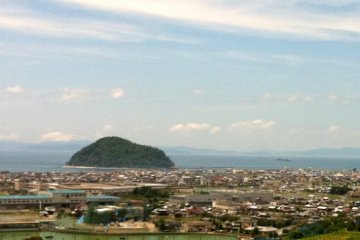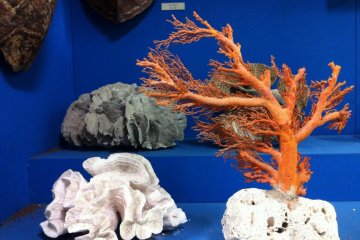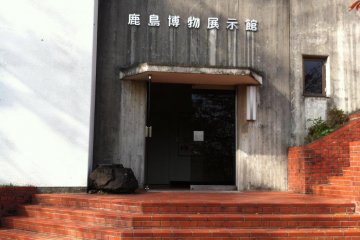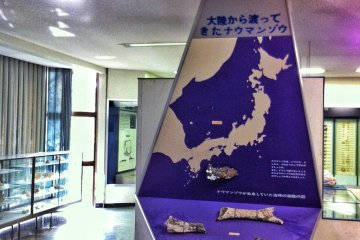Kashima Island is the distinctive blob of mountain that sits in the sea just off the shore of Hojo near Matsuyama. On a clear day, there are spectacular views from the lookout at the top, over the Seto Inland Sea and across the water to Mt.Takanawa. Either route takes about twenty minutes.
There’s lots to do on the island. In the summer, it’s great for swimming and snorkeling in the cold, clear water. Kashima means “Deer Island”, and you can see wild deer as soon as you get into the forest, and tame deer in an enclosure close to the ferry port. Just 1.5 kilometers round, it offers a number of good walks—round the island leftwards or rightward, and over the top of the mountain by various routes. These activities are so engrossing that most people won’t even glance at the museum, especially since it’s a building that looks like a concrete bunker. But it would be a pity to miss a peek inside, because the exhibits are interesting, and it won’t take you more than twenty minutes.
The first exhibit as you enter is a selection of fossilized elephant bones. These big mammals used to roam Japan when both Shikoku, Honshu and Kyushu were all joined to Korea. There are also lots of butterflies and other insects in glass cases. These are insects that can be found in the general area, including Mt. Takanawa. Some of these butterflies are varieties that migrate thousands of miles just to be here.
There’s also a good collection of sea shells, corals, and various unspeakable-looking eels in formaldehyde—a very old-school approach to displaying natural history. Horseshoe crabs are found in the Seto Inland Sea, and a couple of them are on display, with an interesting display of their lifecycle.
Kashima is a sacred island that has never been subjected to agriculture or forestry. In fact, the trees that grow on the island are the type found only in Japan’s rare virgin evergreen forests which typically remain only around shrines and on uninhabited islands. Excavations around the base of Kashima have turned up a large number of votive pottery, and some excellent examples are on display in the museum.
Name in Japanese
鹿島博物展示館 — kashima hakubutsu tenjikan — Kashima Museum of Natural History and Archaeology












